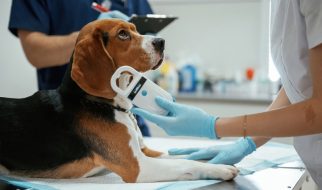Bleeding in Pets: Causes and Management
Many people get nauseous when they see blood, and it’s quite understandable. Bleeding, most of the time needs prompt medical attention. The sight of blood is very unpleasant, whether from people or pet animals. Blood must not be taken lightly; one of the most common factors for fatality is blood loss.
This article will tackle the usual bleeding problems in pet animals. What could be the possible causes of bleeding, and how can we attend to these problems?
Causes
Profuse bleeding ranks high among one of the most common emergencies in pets. Many pet owners think that first-aid for bleeding can be done at home. Unbeknownst to them that any bleeding that lasts for greater than five minutes necessitates that your pet needs to be hurried to a full-service animal hospital like the River Hills Pet Care Hospital. A few of the common bleedings are caused by the following:
- Wounds – can be caused by injury, in many cases, it’s just superficial, but major blood vessels are involved in some instances. Even though the bleeding stops by itself, it’s suggested that a vet still sees the issue to examine if further treatments are required.
- Nosebleeds – this is called epistaxis; it can result from trauma. Nevertheless, infection in nasal cavities could be another reason for nose bleeding.
- Intestinal bleeding – indications can frequently be found on vomit or feces. Blood on vomit can be a result of gastritis or ulcers. Streaks of blood in feces can be an issue in the colon or from viral infections. An internal medicine veterinarian needs to see your pet for this problem. If you’re looking for internists, you can check on a vet’s website.
- Dental disease – saliva with blood can indicate that your pet needs a dental visit. Plaque develops periodontal conditions causing bleeding in the gums.
- Damaged nails – nails contain a blood vessel; in cases of an overgrown nail being accidentally pulled off, bleeding could happen. If the broken nail’s fragments remain, a vet must remove them.
- Hemoptysis – coughing up blood is not very common; your vet might recommend the pet go through further examination in a vet laboratory.
- Blood in the urine – might arise from urinary tract infection, kidney stones, bladder stones, and cystitis. In cases of kidney and bladder stones, your pet should be referred to a vet surgeon for timely treatment.
When should I be alarmed?
The body is designed to form a clot to stop the bleeding instantly. Nevertheless, medical intervention is required in severe bleeding or clotting disorders. Another indication to look for is how well your pet appears during bleeding. Any signs and symptoms of progressing weakness or collapse, faster than normal heart and breathing rate, and weak pulses are all symptoms requiring instant medical care.
Conclusion
The best means to address any bleeding issue in your pet is to quickly schedule a consultation with your vet. Your pet must have a detailed medical examination and possibly further lab testing. This is to detect why your pet may be bleeding accurately.
There could be underlying problems, like a clotting disorder that will likely show bleeding in several locations. Small bleeding under the skin like bruises or bleeding periodontals can occur to pets with a clotting disorder.








